Key takeaways:
- Classical Chinese Dance combines graceful movements with storytelling and cultural heritage, reflecting historical significance and the philosophies of ancient China.
- The evolution of this dance through dynasties highlights its expressive nature, incorporating diverse styles and fostering connections through shared human experiences.
- Technique is crucial in dance, shaping the dancer’s artistry and allowing for effective storytelling through movement.
- Aspiring dancers must focus on consistent practice, control of breath, and deep understanding of choreography to fully express the narrative of their performances.

Introduction to Classical Chinese Dance
Classical Chinese Dance is a mesmerizing art form that blends graceful movements with storytelling and rich cultural heritage. I remember the first time I witnessed a performance; the way the dancers expressed emotions through delicate gestures captivated my heart. Have you ever been so moved by beauty that it lingered in your mind for days?
This dance style transcends mere entertainment; it carries with it deep historical significance, embodying the philosophies and traditions of ancient China. Each movement tells a story, often reflecting the ideals of harmony and balance that are central to Chinese culture. I often find myself thinking about how every twirl and leap connects us to a lineage spanning thousands of years.
The technical precision required in Classical Chinese Dance is striking, yet it possesses an ethereal quality that seems almost otherworldly. As I delved deeper into this art, I found the rigorous training both challenging and rewarding. Can you recall a time when you pushed your limits for something you love? It was in those moments that I truly connected with the essence of the dance, understanding it was not just about the movements but the very spirit behind them.
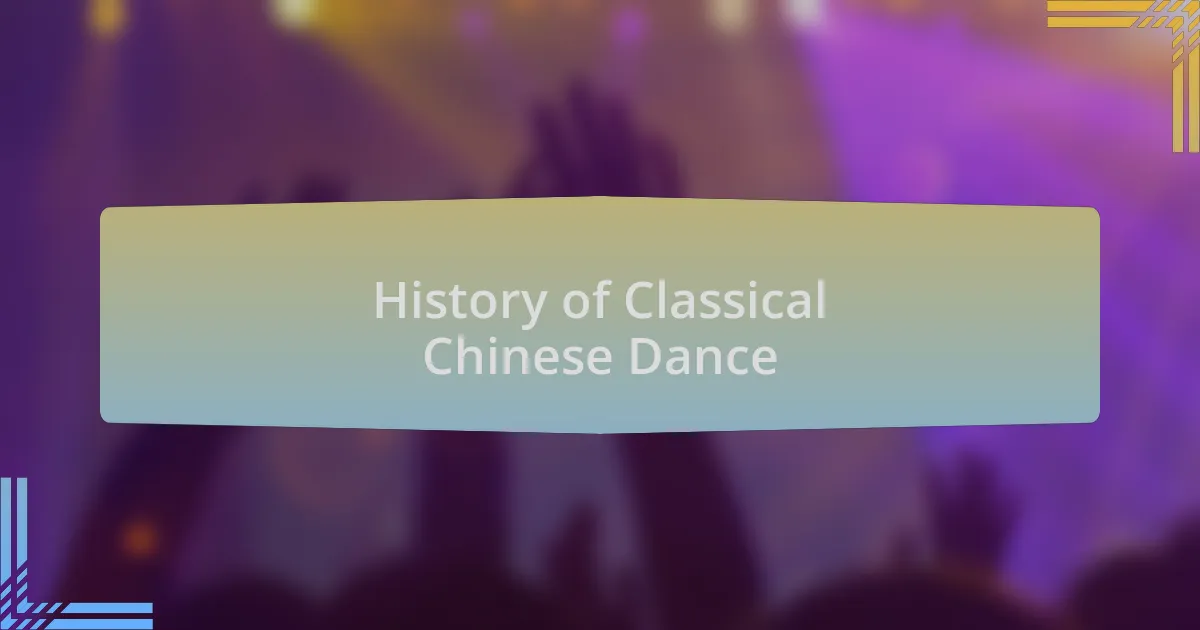
History of Classical Chinese Dance
Classical Chinese Dance has its roots in ancient rituals, with dance being an integral part of early Chinese civilization. As I reflect on its evolution, it strikes me how these early dances, performed for religious and ceremonial purposes, set the foundation for a deeply expressive art form. Isn’t it fascinating how something so essential to spirituality has transformed into a vibrant performance art?
Through the dynasties, particularly during the Tang and Song eras, dance flourished as a cultural expression. I discovered that this period saw the incorporation of different regional styles and the development of elaborate costumes, which served as a stunning visual representation of the dancers’ movements. Can you imagine the breathtaking sight of dancers adorned in silk as they glided gracefully across a palace courtyard?
The influence of classical literature and philosophy further enriched the dance, imbuing it with meanings that resonate with audiences even today. When I began to understand the stories behind the movements, it felt like opening a door to a treasure trove of shared human experiences. How often do we seek connections through art? In this dance, I found a profound vehicle for expressing the joy, sorrow, and dreams that unite us all.
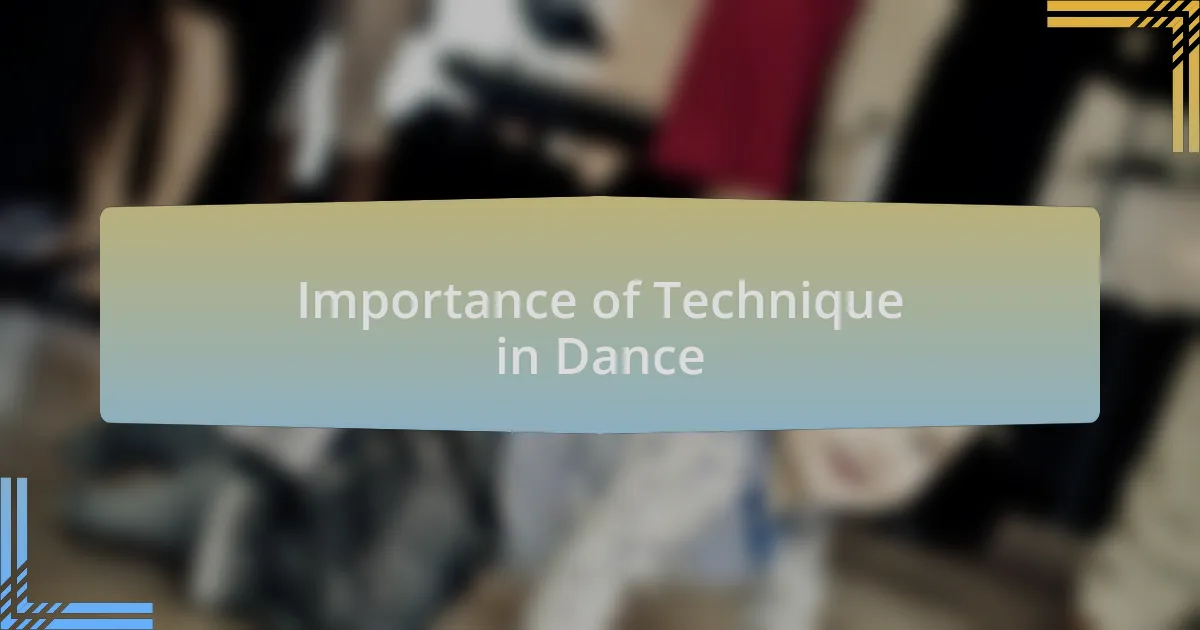
Importance of Technique in Dance
Technique in dance serves as the backbone of a dancer’s artistry. I remember my first ballet class, where the instructor emphasized the importance of mastering the basic positions and movements. At first, it felt tedious, but I quickly realized that these foundational elements opened up a world of expression, allowing me to communicate emotions through my body. Isn’t it incredible how technique can transform simple movements into something transcendent?
As I delved deeper into Classical Chinese Dance, I came to appreciate the intricate techniques that define it. Each movement is precise, requiring immense dedication and practice. One moment that stands out for me was mastering the whip of my arms, which initially felt awkward. But with perseverance, this technique not only enhanced my performance but added a layer of grace and storytelling that resonated with the audience. How can we truly convey a narrative without the skill to execute it?
Technique is not merely about physicality; it shapes our understanding of the art form itself. I often reflect on how dancers who master their techniques seem to embody the very essence of their culture and history. That connection becomes palpable when they perform, as if their entire being resonates with the stories of those who danced before them. Have you ever felt that kind of connection? It’s a reminder of the power of discipline in unlocking the dancer’s voice.
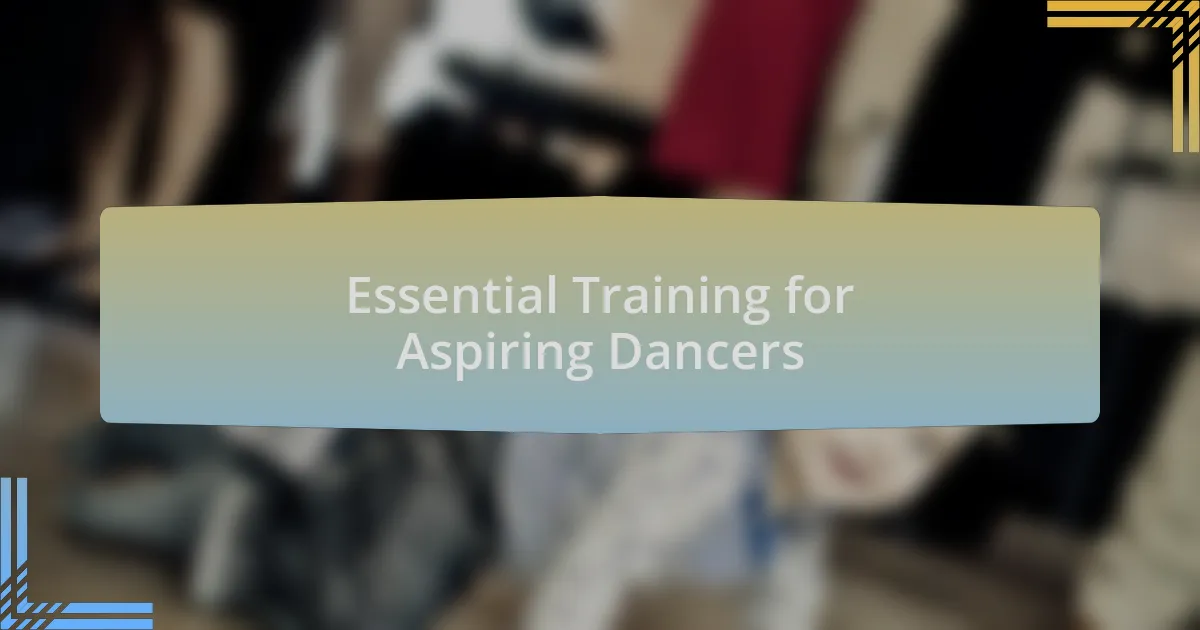
Essential Training for Aspiring Dancers
Training as an aspiring dancer requires a commitment to consistent practice and a deep understanding of one’s body. In my early days, I found that regular stretching not only improved my flexibility but also helped me connect more deeply with each movement. There was a day when I could stretch just a bit further, and it felt like I unlocked a new level of freedom in my dance. Have you ever experienced that exhilarating moment when your body finally responds to your intentions?
In Classical Chinese Dance, learning to control one’s breathing is just as vital as mastering physical movements. I recall my instructor guiding us through breath exercises, explaining how each inhale and exhale could enhance our performance. One particularly memorable practice transformed my understanding of rhythm; syncing my breath with my movements felt like painting with my body. Isn’t it fascinating how something as simple as breath can elevate a performance from ordinary to extraordinary?
Another essential part of training is the study of choreography, which often requires a dancer to immerse themselves in the narrative of the piece. I remember vividly the first time I learned a traditional story through dance; I wasn’t just memorizing steps; I was embodying emotions and experiences. This connection to the story not only enriched my performance but also made me reflect: how can we express ourselves fully if we don’t understand the story we are telling? Engaging with choreography at this level opens a door to authenticity that resonates with both the dancer and the audience.
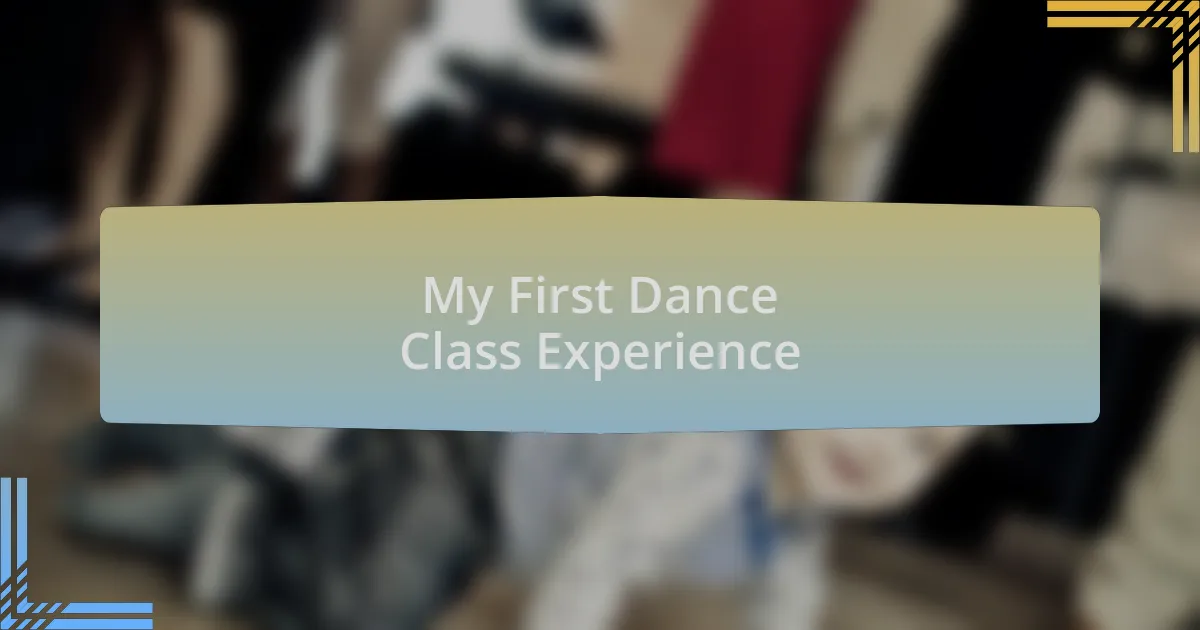
My First Dance Class Experience
I still remember stepping into that dance studio for the first time, a mixture of excitement and nervousness bubbling within me. The air was filled with the sound of soft music, and the mirrored walls reflected the anticipation on my face. Would I keep up? That initial moment of stepping onto the dance floor felt like embarking on a journey I had long dreamed of.
As our instructor gathered us around, I was immediately struck by the grace and poise of the other dancers. I felt like a fish out of water, but when the music started, something shifted. I lost myself in the rhythm, following the instructor’s lead as I let the movements flow through my body. Did it feel awkward? Absolutely. But there was an undeniable thrill in expressing emotions through those seemingly foreign movements.
During our first exercise, we practiced a sequence that required precision and fluidity. As I attempted each move, I could feel my body begin to respond, slowly adapting to the nuances of Classical Chinese Dance. It was as if I was learning a new language, one that spoke directly to my soul. Can a single class really ignite a passion that has been simmering for years? For me, that question has been answered with every step I took in that studio, igniting a flame that has only grown brighter since that very day.
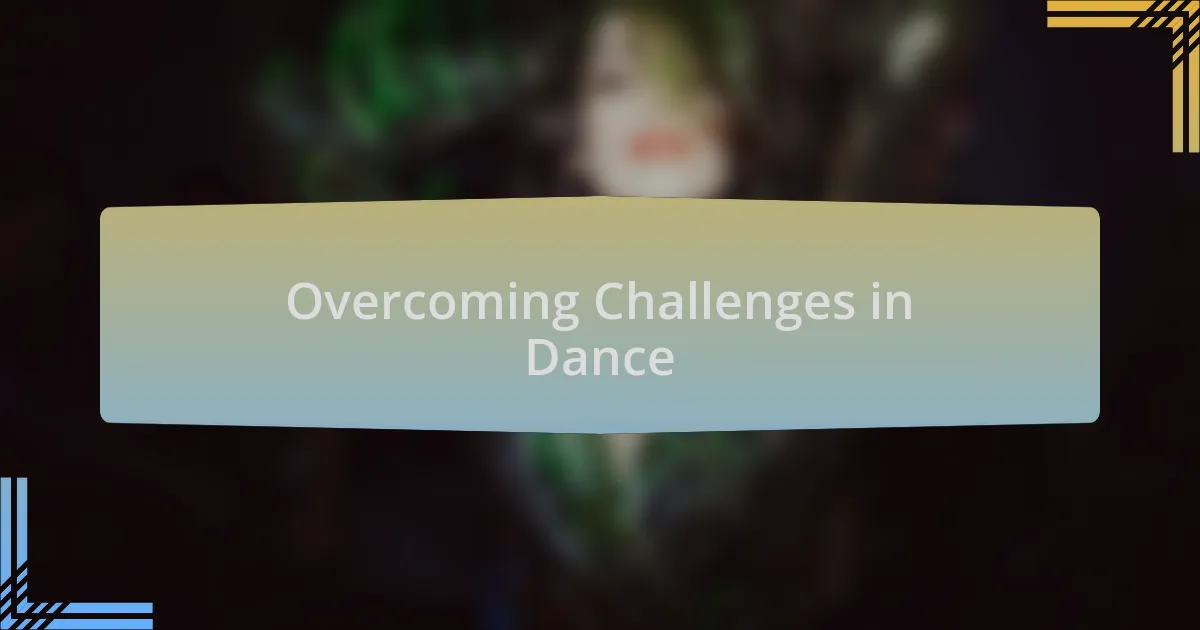
Overcoming Challenges in Dance
Overcoming challenges in dance is an essential part of the journey. I remember grappling with difficult techniques that seemed insurmountable at first. Rather than letting frustration take over, I focused on small victories, like perfecting a single move before moving on. Does that sound familiar? Breaking down complex challenges into bite-sized pieces made the entire process much more manageable and enjoyable.
Not every day felt like a step forward; some days were filled with setbacks. There were moments when fatigue set in, and I questioned if I had the stamina to continue. Yet, pushing through those tough days helped me build resilience. It taught me that every stumble is a lesson learned, and sometimes, the hardest moments turn out to be the most rewarding. Have you ever felt like you were at a standstill only to discover that it was a necessary pause for growth?
The joy of overcoming these challenges can be profoundly liberating. I vividly recall the day I finally executed a challenging sequence flawlessly—a culmination of persistence and practice. The exhilaration of achieving something I once thought impossible left me breathless. It made me realize that the journey doesn’t just involve mastering technical skills; it’s also about cultivating mental strength and growth. Isn’t it amazing how dance can mirror life’s challenges, pushing us to confront and overcome our fears?